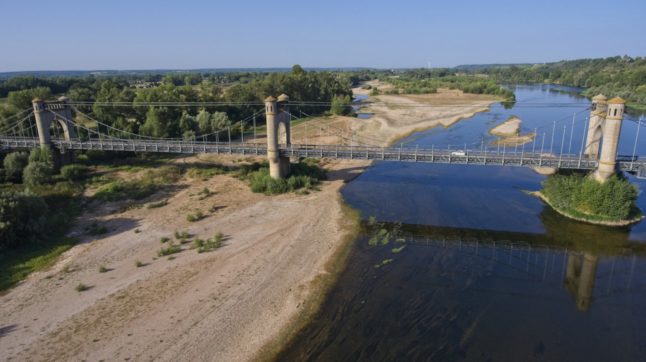The body of an adult man was found on Monday morning in the Gard département of southern France, bringing the official death toll up to five victims after intense storms and floods over the weekend.
Another victim of the storm was an 87-year-old man who drowned in the Herault river. His body was found Monday stuck between tree branches around 20 metres from his car.
The local authorities also tweeted on Monday morning that 110 firefighters and 120 gendarmes were working to find those still missing.
[VigilanceOrange] 🟠 Crues #Gard pour la Cèze aval et Rhône. #VigilanceJaune 🟡orages pour le département.
⚫️Bilan humain provisoire sur la commune de Dions :
Le corps d’un homme a été retrouvé ce matin.
Le véhicule des disparus a été retrouvé en aval du pont submersible hier.…— Préfet du Gard (@Prefet30) March 11, 2024
A man and his two children, aged four and 13, were still missing on Monday afternoon.
The family of four were caught in the floods while trying to drive across a bridge over the river Gardon in the village of Dions, north of the city of Nimes, the prefecture said.
Local authorities had not yet confirmed whether the body discovered on Monday belonged to the father, but it was discovered approximately 2km from the bridge in Dions, the head of the local gendarmerie told French media France Bleu.
The mother, 40, who was also in the car, was found by rescuers and taken to hospital.
A 70-year-old man in the neighbouring département of Ardeche was still missing as of Monday. The manager of a hydroelectric power station in the village of Saint Martin de Valamas, he had gone in to check on the facility on Saturday evening.
On Sunday, rescue workers discovered the body of a Belgian man, who was located a few hundred metres away from where his car had been swept away. He had been missing since Saturday evening.
The public prosecutor in Alès has opened an investigation into the man’s cause of death. The road had been closed and a police officer had told the driver not to drive on the bridge, officials said.
A passenger in his vehicle, also Belgian, managed to get out and take refuge in a tree, before being rescued after more than two hours amid the branches.
Two women aged 47 and 50, previously reported missing, were also found dead in the town of Goudargues in the Gard département.
On Sunday evening, “their vehicle was found with two bodies inside”, the Nîmes public prosecutor announced, adding that autopsies would be carried out at the Nîmes forensic institute on Monday.
Interior Minister Gérald Darmanin said on Sunday that rescuers had carried out a total of 35 operations as the storm and torrential rains swept across the Ardèche and Gard departments.
The préfecture in Gard expressed regret that despite multiple warnings about the incoming storm, “we still see behaviour that is dangerous, first of all for the people themselves but also dangerous for the people whose duty it is to come to their aid.”



 Please whitelist us to continue reading.
Please whitelist us to continue reading.
Member comments